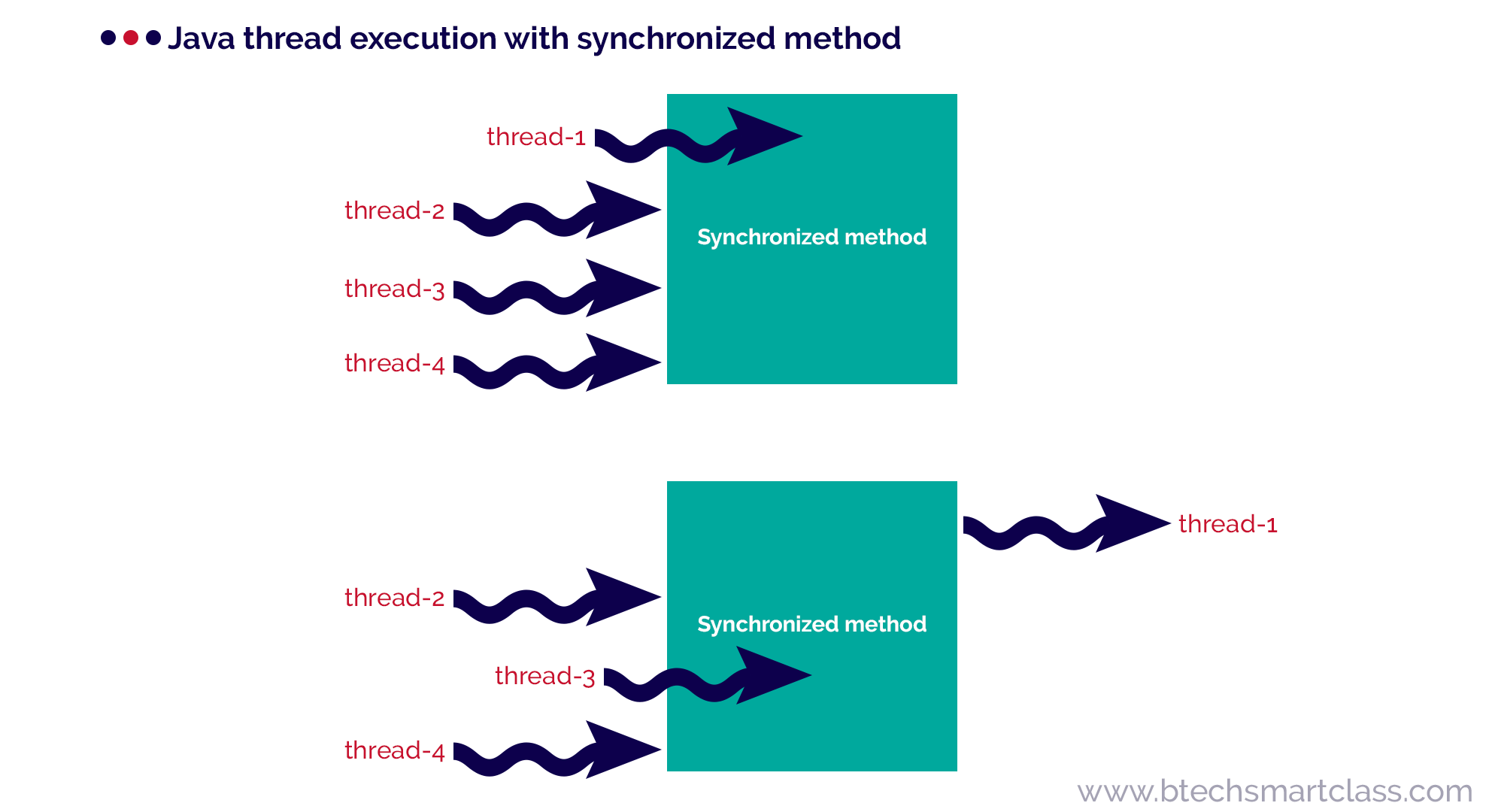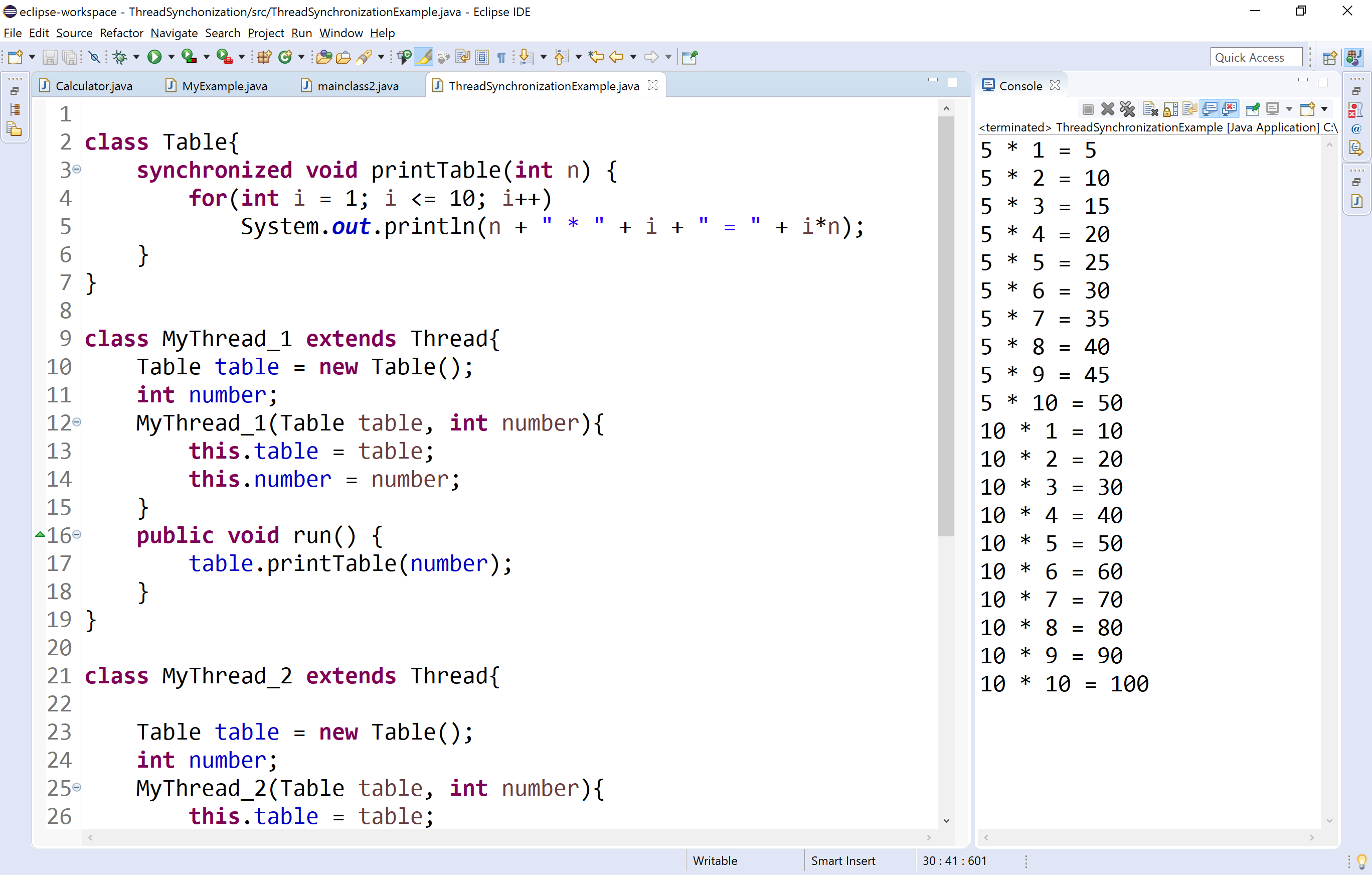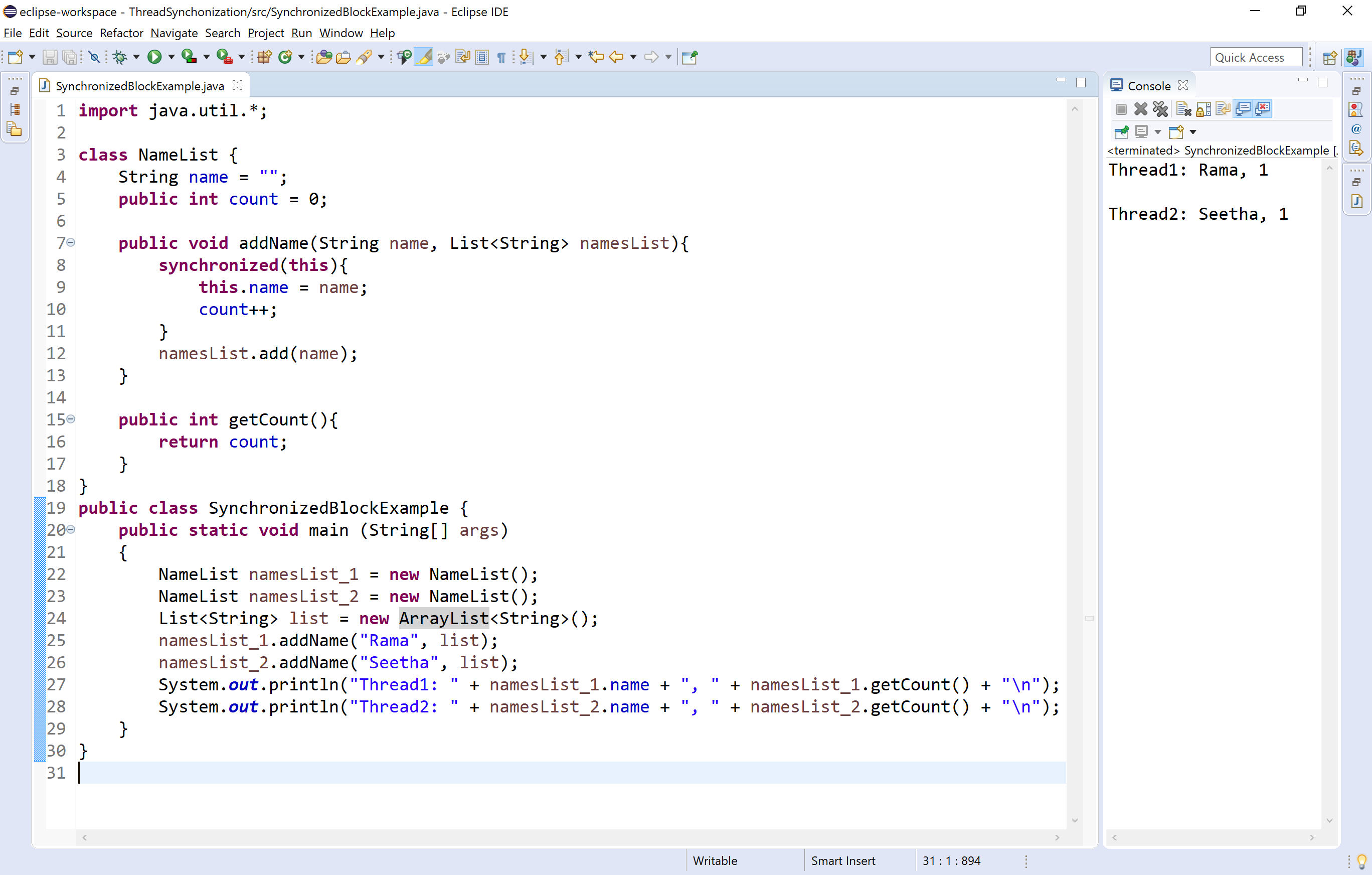Java Thread Synchronisation
The java programming language supports multithreading. The problem of shared resources occurs when two or more threads get execute at the same time. In such a situation, we need some way to ensure that the shared resource will be accessed by only one thread at a time, and this is performed by using the concept called synchronization.
🔔 The synchronization is the process of allowing only one thread to access a shared resource at a time.
In java, the synchronization is achieved using the following concepts.
- Mutual Exclusion
- Inter thread communication
In this tutorial, we discuss mutual exclusion only, and the interthread communication will be discussed in the next tutorial.
Mutual Exclusion
Using the mutual exclusion process, we keep threads from interfering with one another while they accessing the shared resource. In java, mutual exclusion is achieved using the following concepts.
- Synchronized method
- Synchronized block
Synchronized method
When a method created using a synchronized keyword, it allows only one object to access it at a time. When an object calls a synchronized method, it put a lock on that method so that other objects or thread that are trying to call the same method must wait, until the lock is released. Once the lock is released on the shared resource, one of the threads among the waiting threads will be allocated to the shared resource.

In the above image, initially the thread-1 is accessing the synchronized method and other threads (thread-2, thread-3, and thread-4) are waiting for the resource (synchronized method). When thread-1 completes it task, then one of the threads that are waiting is allocated with the synchronized method, in the above it is thread-3.
class Table{
synchronized void printTable(int n) {
for(int i = 1; i <= 10; i++)
System.out.println(n + " * " + i + " = " + i*n);
}
}
class MyThread_1 extends Thread{
Table table = new Table();
int number;
MyThread_1(Table table, int number){
this.table = table;
this.number = number;
}
public void run() {
table.printTable(number);
}
}
class MyThread_2 extends Thread{
Table table = new Table();
int number;
MyThread_2(Table table, int number){
this.table = table;
this.number = number;
}
public void run() {
table.printTable(number);
}
}
public class ThreadSynchronizationExample {
public static void main(String[] args) {
Table table = new Table();
MyThread_1 thread_1 = new MyThread_1(table, 5);
MyThread_2 thread_2 = new MyThread_2(table, 10);
thread_1.start();
thread_2.start();
}
}
When we run this code, it produce the following output.

Synchronized block
The synchronized block is used when we want to synchronize only a specific sequence of lines in a method. For example, let's consider a method with 20 lines of code where we want to synchronize only a sequence of 5 lines code, we use the synchronized block.
The folllowing syntax is used to define a synchronized block.
synchronized(object){
...
block code
...
}
Look at the following example code to illustrate synchronized block.
import java.util.*;
class NameList {
String name = "";
public int count = 0;
public void addName(String name, List<String> namesList){
synchronized(this){
this.name = name;
count++;
}
namesList.add(name);
}
public int getCount(){
return count;
}
}
public class SynchronizedBlockExample {
public static void main (String[] args)
{
NameList namesList_1 = new NameList();
NameList namesList_2 = new NameList();
List<String> list = new ArrayList<String>();
namesList_1.addName("Rama", list);
namesList_2.addName("Seetha", list);
System.out.println("Thread1: " + namesList_1.name + ", " + namesList_1.getCount() + "\n");
System.out.println("Thread2: " + namesList_2.name + ", " + namesList_2.getCount() + "\n");
}
}
When we run this code, it produce the following output.

🔔 The complete code of a method may be written inside the synchronized block, where it works similarly to the synchronized method.
